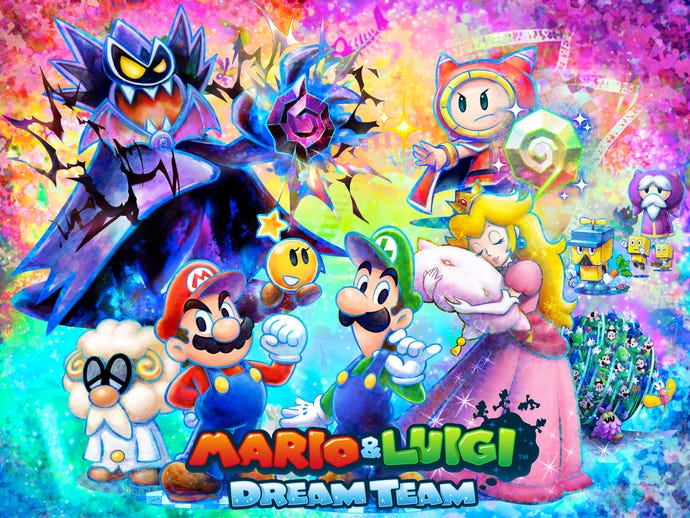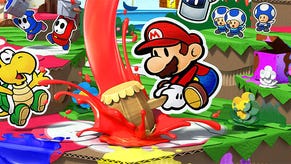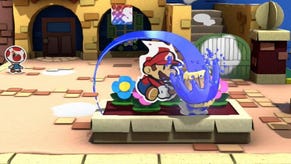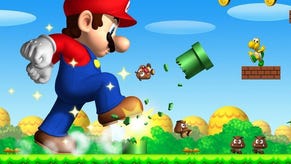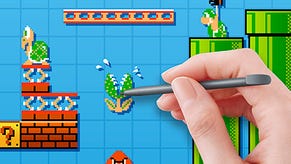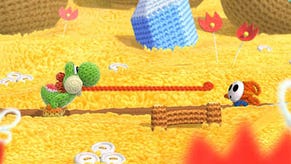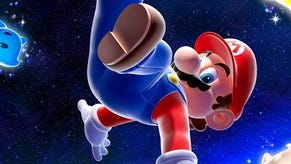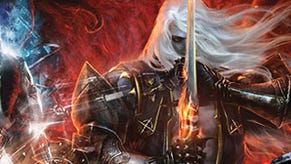USGamer Interviews the Developers of Mario & Luigi : Dream Team
We ask why tutorials in the franchise take so bloody long and other tenuously related questions about the upcoming RPG.
This article first appeared on USgamer, a partner publication of VG247. Some content, such as this article, has been migrated to VG247 for posterity after USgamer's closure - but it has not been edited or further vetted by the VG247 team.
Imagine if you could control Luigi's mustache or trigger weather effects by scratching his nose. No, this isn't wistful conjecture made by Peter Molydeux. Such things are real features within Alphadream's upcoming Mario & Luigi Dream Team. Last week, we had a chance to talk to the game's producers Yoshihiko Maekawa and Akira Ohtani, its director Hiroyuki Kubota and Nate Bihldorff from NOA Treehouse about how exactly they decided on such zany ideas.
USGamer: There are currently two Mario RPGs on the 3DS. What would you say differentiates the two franchises?
The way we try to think about this is that the Mario & Luigi series is closer to the idea of a more traditional RPG in Japan for us where you gather experience points and so on. It also has a few of those action elements incorporated into the game to make it feel more like a classic Mario game, perhaps As for the Paper Mario series, we don't work on it directly but we do occasionally view it to see what they're doing. How to disambiguate when we're trying to work on these games is not something we generally think about.
USGamer: The visual style is really interesting. There's a whole lot of elegant sprite-ing along with the 3D stuff. What made you decide to go into that?
Maekawa: This is a pretty simple answer, I suppose. I always thought that Alphadream was really good at designing these 2D sprite characters throughout Mario & Luigi series as well as Tomato Adventures. We always want to play to our strengths in designing those sprites and even though on the 3DS we had the opportunity to go in a slightly different direction, we decided to stay with those sprites because of how useful they were for conveying various kinds of comical expressions. We started early before we knew a lot about the hardware but when we found out it was capable of stereoscopic effect, we knew we wanted to challenge ourselves and have that reflected in the environment of the games somehow. And that was the background of what influenced the creation of the visual style of the game you see right now.
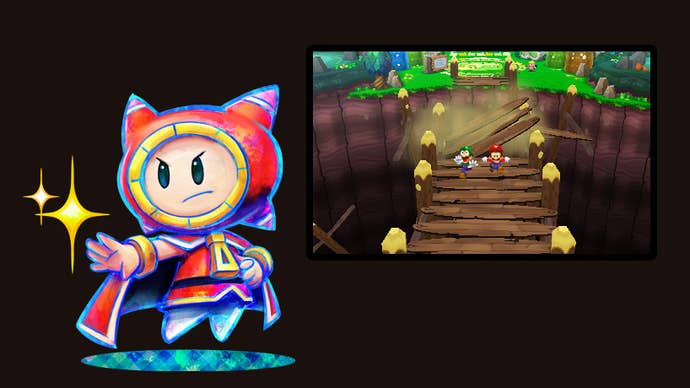
USG: Mario & Luigi: Dream Team just has a mind-boggling amount of stuff going on. Is there a method to the madness? What is the development process powering your decisions on what to keep and what not to keep in the game?
Kubota: I think the best way to answer this question is to first introduce a bit of the level of ideas that was in the early production of the game. The very first idea we came up with really was the basis of the project: the notion of having a lot of Luigis on the screen that you could control and who would run around. That was an idea that popped out around the time we were finishing the last game in the series. We knew we were going to move into a new hardware platform with greater processing power so we figured it could handle displaying this many Luigis on the screen at the same time. Then, we had to think of some sort of scenario where we could justify having lots of Luigis on screen and that's when we really began hitting on the idea of a dream setting which could help justify having that many Luigis. Once we had those ideas in play, we had to start coming up with what are the different gameplay ideas that work with the dream and the real world . We generated lots and lots of ideas along those lines. For example, among the battle attacks, there were many more ideas that we discussed than you'll actually find in the game.
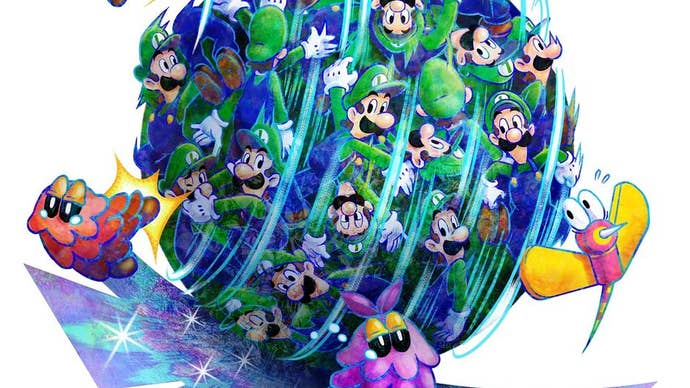
We started out by brainstorming and generating a lot of these ideas and sketching them out and talking about how much fun they would be and whether they would be easy to play. Some of these actually make it to the prototype stage but if any of these are not actually fun to play or difficult to control then we toss them aside. Anything that shows a lot of promise will go past the prototype stage.
USGamer: What kind of prototypes did not make it to the finishing stage. You know, the ones that died on the vine?
Kubota: I think the one idea that really stood out for me was this battle attack in which a lot of Luigis would come together and form a volcano which would then erupt. More Luigis that would then fall on the enemies and damage them. This would have been the Luigi Volcano and we actually did prototype this but we realized it didn't control very well and it wasn't as fun as we hoped it would be.
USGamer: A lot of games these days seem to be trying to truncate their tutorials and make them simpler. Why does this seem to be the reverse with Mario & Luigi games?
Ohtani: I feel like our approach to the incorporation of tutorials in the series is something we've really thought a lot about. It's really something important to us. For example, we've tried to make it so that it works along with the flow of story. And the reason for that is we don't want to suddenly stop the flow of the game and redirect them to a tutorial corner or area as it breaks the sequence they've been experiencing so far. We want it to continue being a part of the journey and feel enjoyable to the players. But we do feel it is necessary because there are a lot of game systems in it. It can be quite complex and we don't want to lose or alienate any of our players.
USGamer: There are definitely some complex stuff in there. However, the game even gives you, like, a tutorial on how to jump. Are you concerned about people that might feel aggrieved about that?
Ohtani: I guess I wonder why people who don't need the tutorial for that don't simply cancel out or skip through them. I feel like it's still important to have a tutorial on something as simple as jumping because the Mario & Luigi series is played by children as young as five years old. In fact, my son is five. When I watched him play, he had some trouble with the jump. It's also important to point out it's not quite the same jumping feel as what you might find in a Mario game from Mr. Miyamoto. So,we feel it's still important to address it and more advanced players can skip it if they like.
Ohtani: Certainly, though, I agree to some fans this must seem too obvious to include a tutorial on something like jumping. But, as it turns out, the timing for the jump tends to change with each installment of the game so I feel it's still a good idea for some people to refresh themselves with a quick course on how the timing has changed from what they may remember. It's a nice way to update your skills and hopefully we've designed it so it's fun.
USGamer: The Mario & Luigi series introduces a whole host of new characters. I'm curious as to what makes a Mario & Luigi character. What goes into the decision process? How do you decide who to keep?
Kubota: We have a designer who works on character creation and of the various creations he comes up, we'll take a look at these and consider the setting and the scenario of the game for what might be the best fit. We have to consider if they have that Mario & Luigi feel. Generally, it's going to be characters that have the best range of comical expressiveness that we use. We have to send these ideas to Nintendo for their consideration and it's hard to convey in words how we've developed our own intuitive sense for what is considered acceptable or not but a simple phrasing of it is, "fun, but not too twisted" but we always see what we can get away with, nonetheless. We try to push the boundaries a little bit each time though that doesn't always work.
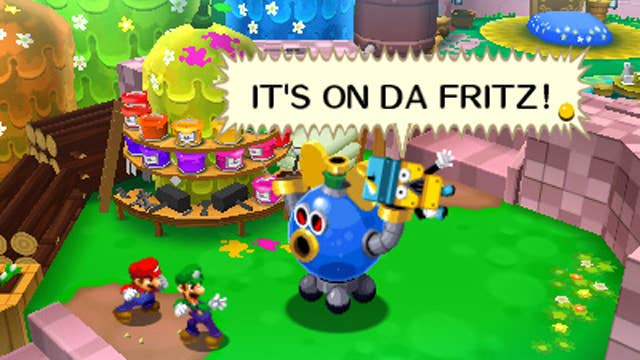
USGamer: I'm curious as to which of the characters did not make it past Nintendo's Board of, er, People Who Accept Things.
Kubata: The best example of this that I can probably give is Dreambert which was a character that we had to redesign a number of times. The original idea was that we weren't just going to put a face on a pillow but rather that something would come out of the pillow. The whole thing just seemed too unsettling to many of the people who viewed it and it felt like we weren't using the idea of the pillow well. So, we had to send back to the drawing board a number of times before we got to the right place.
USGamer: Do you keep your international audience in mind when you're writing the dialogue and humor in the game?
Kubota: Yes, we do think internationally when we're considering what kind of jokes and humor will appear in a game. We always ask ourselves, "Okay, this is funny and is this going to be funny to everyone?" Having said that, there's still a lot of work that occurs in the translation and sometimes, the emphasis in a joke will shift quite a bit during the localization process.
Ohtani: I agree and I think Alpha Dream is really good at thinking globally. But it's also true that Nate and others give a lot of interesting changes and feedback on this. They've managed to find ways to change the expression you find within a game without changing the essence and I think that's a tricky balance there.
USGamer: Can you give me an example of that?
Bihldorff: We do that with practically every character. The dialogue, I think, in general, needs to be tweaked a little bit but we're always trying to preserve the actual core meaning. That pertains to characters, to how comedic scenes play out. Our mission with every single one of these games is to take what's inherently funny and make sure it's just as funny for an American audience as it is for Japanese audience. Normally, all that takes is a little bit of a dialogue tweak here and there. One of the examples is there are a couple of characters called Li'l Massif and Big Massif who are sort of, well, meatheads. They're tour guides who help you climb Mt. Pajamaja. They speak really, really enthusiastically and flex their muscles and just these enormous musclebound – I hate to call them idiots because they're decent at what they do – but they clearly take fitness very seriously. We preserved the core of that and layered on a bit extra by adding a slight Russian accent just to make some of their lines hit a little harder.
USGamer: Okay, the next question's a bit meta, I guess. Now, a lot of people talk about how Luigi is the brother who no one really likes. With Mario & Luigi: Dream Team, is all this wish fulfillment on his part or is this possibly a case of the younger brother achieving some case of superiority?
Ohtani: Oh, Luigi always felt pretty major to me!
Maekawa: I don't know if we were reacting so much to the history of player impressions of Luigi though we are certainly aware that players tend to consider him as sort of secondary in comparison to Mario.
I think one of the reasons people have this impression because in multiplayer games Mario was the first player and Luigi was the second player so if you were playing with a friend, you'd be like, 'Well. Okay. You can have this other controller and you can play as Luigi. I guess.' That was kind of the impression. And although we've had our fun with Luigi in the past in the series, I feel like we have taken this opportunity to show him as a much more depth-filled character. We've also tried to show him as an equal to Mario whenever we've had the chance.
Kubota: So, you may be aware of the image of the sleeping Luigi on the screen. If you play with his mustache while he is sleeping, this may actually affect battle and I tend to think of the setting of Luigi's dreams as more of something we needed to justify the gameplay elements we included rather than specifically thinking of it as wish fulfillment for the character.
USGamer: Do jokes within a game change when it comes to localization for the UK and the US market?
Bihldorff: We'll have back and forths with Nintendo of Europe about that specifically. I'll talk with their UK translators and change things. Certain games will actually diverge. The UK translators will actually do their own translations when necessary. Especially for a game like Animal Crossing where you need to feel like it's your neighbors talking to you. They'll probably take a heavier hand there. A game like Mario & Luigi? They're probably going to take my text wholesale . We try to keep it so that the jokes are universal and will appeal everywhere. That's not to say I don't occasionally get an e-mail where they say, 'By the way, this is a profanity in Britain so you can't use that.'
